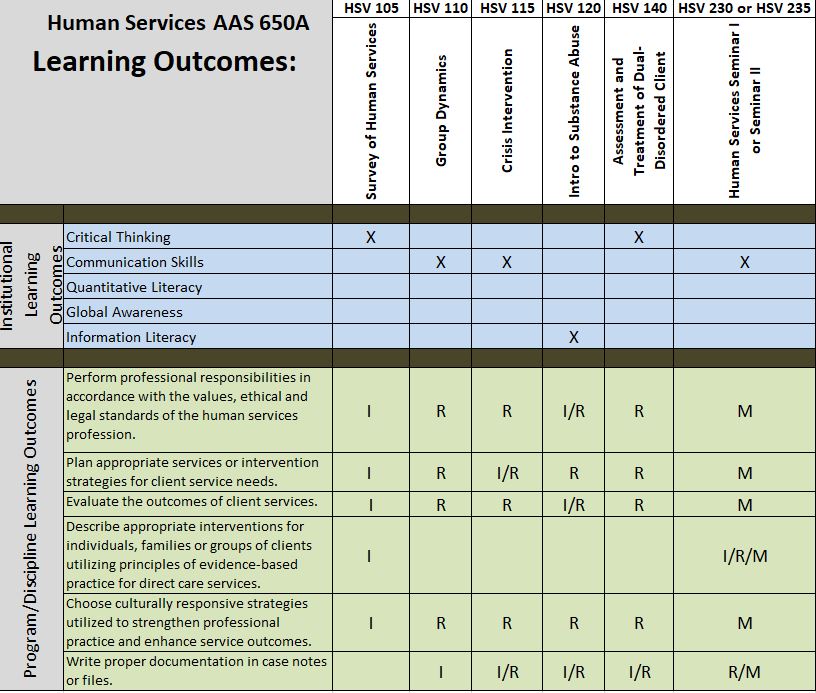
Curriculum Mapping
Curriculum mapping is curriculum awareness and a visual representation of the structure of curriculum:
Mapping helps us look at our programs in a holistic way – at a level beyond individual courses – and making sure that program [and discipline] curriculum provides appropriate conditions for student achievement of intended program [and discipline] learning outcomes. (Palomba & Banta, 1999)
Palomba, C. A., & Banta, T. W. (1999). Assessment essentials: Planning, implementing, and improving assessment in higher education. San Francisco: Jossey-Bass Publishers.
Why Map Curriculum?
- For alignment (within a program, between general education and institutional goals, etc.)
- To identify where and how particular outcomes are expected, explicitly taught for, and assessed
- To facilitate curriculum and course design
- To reflect the requirements and pre-requisites for each course
- To Illustrate the organizational relationship between courses, programs and institutional outcomes
Uses of Curriculum Maps
- Provides an overview of the structure of the curriculum and the contribution of individual courses to the goals of the program
- Identifies program strengths and gaps in addressing student learning outcomes
- Suggests optimal sequence for students
Questions Curriculum Mapping can Answer
- In the key courses, are all outcomes addressed, in a logical order?
- Do all the key courses address at least one program outcome?
- Do multiple offerings of the same course address the same outcomes, at the same levels?
- Do some outcomes get more coverage than others?
- Are all outcomes first introduced and then reinforced?
- Are students expected to show high levels of learning too early?
- Do students get practice on all the outcomes before capstone?
- Do all students experience a coherent progression and coverage of all outcomes?
- How do electives, if present, contribute to the achievement of student learning outcomes?
Jankowski, N. (2014) Mapping learning outcomes: What you map is what you see [Powerpoint Slides]. Retrieved from https://drive.google.com/file/d/1iIzkPAcX8RKfkwkZhdWj_nBNWmej6e5l/view
Program/Discipline Curriculum Mapping
The Process:
- Focused on curriculum and learning outcomes
- Two-dimensional matrix representing courses on one axis and outcomes on the other
- Faculty identify which courses address where learning outcomes are introduced, reinforced, and mastered.
The map below is an example of a program curriculum map. Both Programs and Disciplines can be mapped. Disciplines map according to broad outcomes for students that intend to major in the discipline and transfer to a 4-year institution.

I=Introduce R=Reinforce M=Mastered
The map below is an example of a course curriculum map.

Additional Information about Program and Course Curriculum mapping as well as FAQs
This page is licensed under a Creative Commons Attribution-Noncommercial 4.0 International License.
